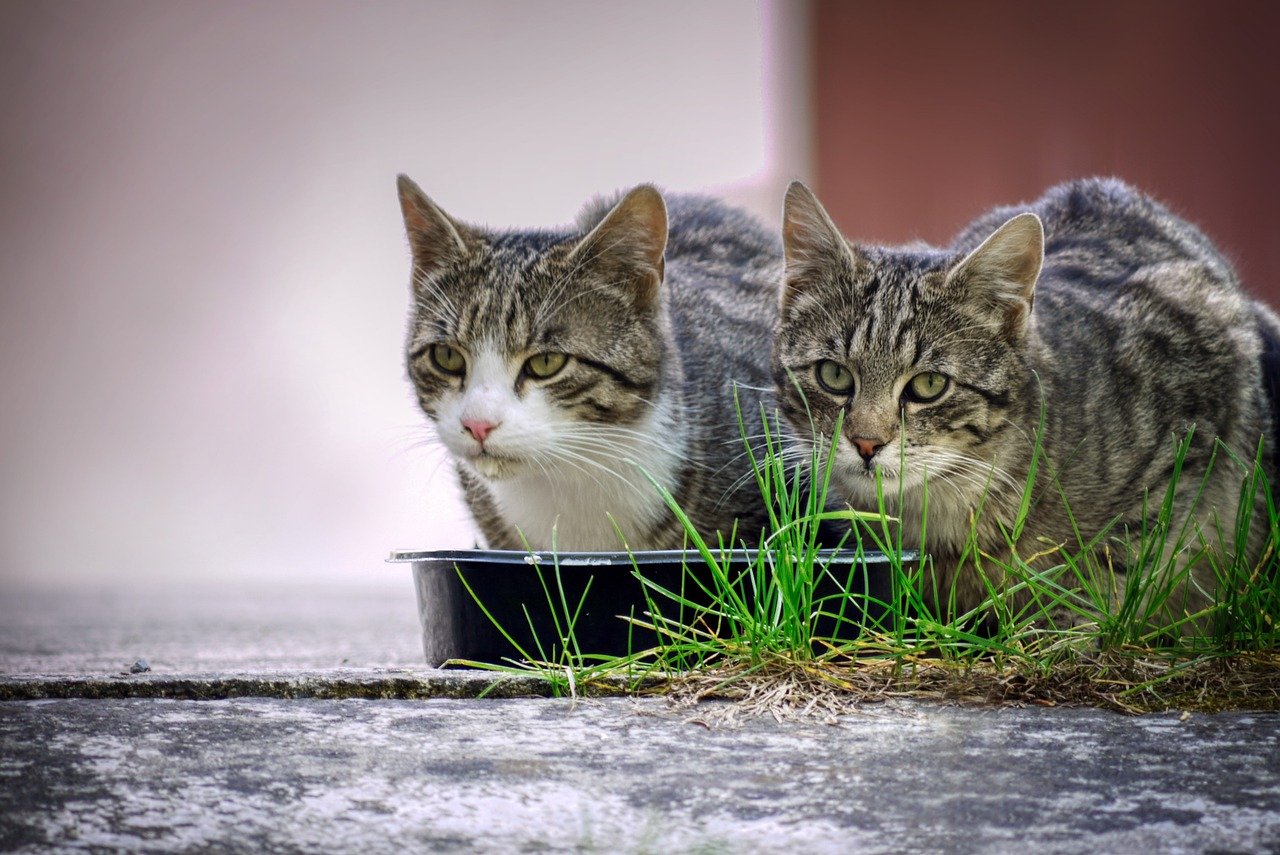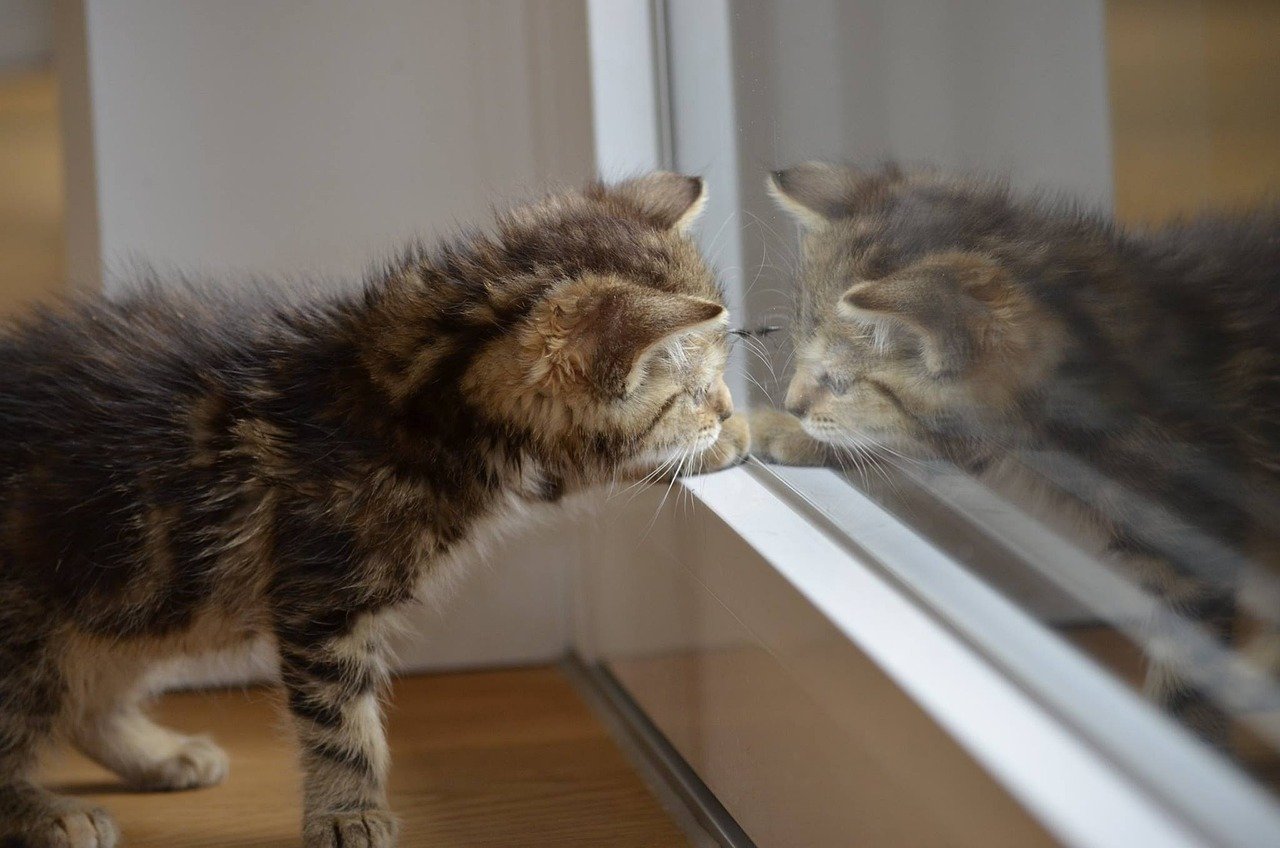Cats have been companions to humans for centuries, and yet they still manage to baffle us with their peculiar behaviors. While some of these habits might seem odd or even downright bizarre, there’s usually a logical explanation behind them. In this article, we’ll delve into twelve of these strange cat habits and uncover the reasons why our feline friends behave the way they do. So, if you’re a cat enthusiast or simply curious about these mysterious creatures, read on to discover the fascinating world of cat behavior.
1. Kneading with Their Paws
One of the most endearing habits of cats is their tendency to knead with their paws. This behavior, often referred to as “making biscuits,” can be traced back to their kittenhood. When kittens nurse from their mothers, they instinctively knead to stimulate milk flow. As adult cats, this kneading becomes a comforting gesture, often associated with contentment and relaxation. It’s their way of expressing affection and marking their territory with scent glands located in their paws. So, when your cat kneads on you, consider it a sign of love and trust.
2. Chattering at Birds

Cats are natural hunters, and their chattering behavior when they see birds or small animals through a window is a testament to this instinct. This peculiar sound, a mix of chirps and clicks, is believed to be a mimicry of bird calls. Some experts suggest that it’s a sign of frustration at being unable to reach their prey, while others believe it’s a way for cats to practice their hunting skills. Regardless of the reason, this habit showcases the complex and intelligent nature of cats.
3. Bringing You “Gifts”
If you’ve ever received a “gift” from your cat, such as a dead mouse or bird, you might wonder why they feel compelled to share their catch. In the wild, mother cats teach their kittens to hunt by bringing back prey. Domesticated cats, lacking the need to hunt for survival, may bring these offerings to their human companions as a form of teaching or bonding. While it might be unsettling to receive such gifts, it’s a testament to your cat’s affection and respect for you as part of their family.
4. Obsession with Boxes
Cats and boxes are an iconic duo, but why do they have such an obsession with these simple containers? The answer lies in their natural instincts. Boxes provide cats with a sense of security and a perfect hiding spot, reminiscent of the tight spaces they would seek in the wild to avoid predators. Additionally, boxes offer a vantage point from which cats can observe their surroundings while remaining unseen. It’s their way of feeling safe and in control, making boxes an irresistible attraction.
5. Nighttime Zoomies
Many cat owners are familiar with the phenomenon of the “nighttime zoomies,” when their feline friend suddenly bursts into a frenzy of activity during the night. This behavior is rooted in their crepuscular nature, meaning they are most active during dawn and dusk. In the wild, these times are ideal for hunting, and the nighttime zoomies are a reflection of this instinct. While it might be inconvenient for their human counterparts, it’s a natural part of their behavior and a sign of a healthy, energetic cat.
6. Headbutting and Rubbing
When a cat headbutts or rubs against you, it’s not only a sign of affection but also a form of communication. Cats have scent glands located on their heads, and by headbutting or rubbing against objects or people, they are marking their territory and leaving their scent behind. This behavior is a way for cats to establish social bonds and show trust. So, when your cat greets you with a gentle headbutt, take it as a warm feline embrace.
7. Sleeping in Unusual Places

Cats are notorious for choosing the most unconventional places to nap, from sinks to bookshelves. This habit stems from their instinct to find safe, hidden spots to rest, just as they would in the wild. Sleeping in elevated or enclosed areas allows them to keep a watchful eye on their surroundings while feeling secure. Additionally, cats are creatures of comfort, and they may seek out warm or cozy spots that appeal to their senses, even if it means curling up in unexpected places.
8. Drinking from Faucets

Have you ever caught your cat drinking from a dripping faucet? This behavior can be traced back to their preference for fresh, running water, which is often cleaner and more oxygenated than stagnant water in a bowl. In the wild, cats would naturally seek out sources of running water, and this instinct persists even in domesticated cats. The sound and movement of running water also pique their curiosity, making faucets an intriguing and refreshing choice for a drink.
9. Staring at Nothing
It’s not uncommon for cats to seemingly stare at nothing for extended periods, leaving their owners puzzled. While it might appear that they’re gazing into the void, cats have incredibly acute senses, especially their hearing and vision. They might be detecting subtle movements or sounds that are imperceptible to humans. This behavior is a testament to their heightened awareness and serves as a reminder of their vigilant nature, always on the lookout for potential prey or threats.
10. Licking Plastic Bags
The sight of a cat licking a plastic bag might seem bizarre, but there’s a logical explanation behind it. Many plastic bags contain compounds derived from animal fats or cornstarch, which can emit a scent that attracts cats. Additionally, the texture of the plastic might be appealing to their tongues. While this behavior is generally harmless, it’s essential to ensure that your cat doesn’t ingest any plastic, as it can pose a choking hazard or cause digestive issues.
11. Burying Their Food

Some cats have the peculiar habit of scratching around their food bowl, as if attempting to bury their meal. This behavior is an instinctual throwback to their wild ancestors, who would bury leftover food to hide it from predators or to return to it later. Domesticated cats may not have the same survival needs, but the instinct remains. It’s a fascinating glimpse into their primal nature, even if it seems unnecessary in the safety of our homes.
12. Pawing at Mirrors

When cats encounter a mirror, they often paw at it or seem intrigued by their reflection. This behavior is a result of their curiosity and the inability to recognize themselves in the mirror. Unlike humans, cats lack self-awareness, so they perceive their reflection as another cat. Their pawing is an attempt to interact with this “other” cat, driven by their social instincts. It’s a reminder of their inquisitive nature and their constant exploration of the world around them.
As we’ve explored, the seemingly strange habits of cats often have logical explanations rooted in their instincts and natural behaviors. Understanding these quirks not only deepens our appreciation for our feline companions but also strengthens the bond we share with them. Whether it’s kneading, chattering, or sleeping in odd places, each behavior is a window into the fascinating world of cats.

Linnea is a born and bred Swede but spends as much time as possible in Cape Town, South Africa. This is mainly due to Cape Town’s extraordinary scenery, wildlife, and atmosphere (in other words, because Cape Town is heaven on earth.) That being said, Sweden’s majestic forests forever hold a special place in her heart. Linnea spends as much time as she can close to the ocean collecting sea shells or in the park admiring puppies.






